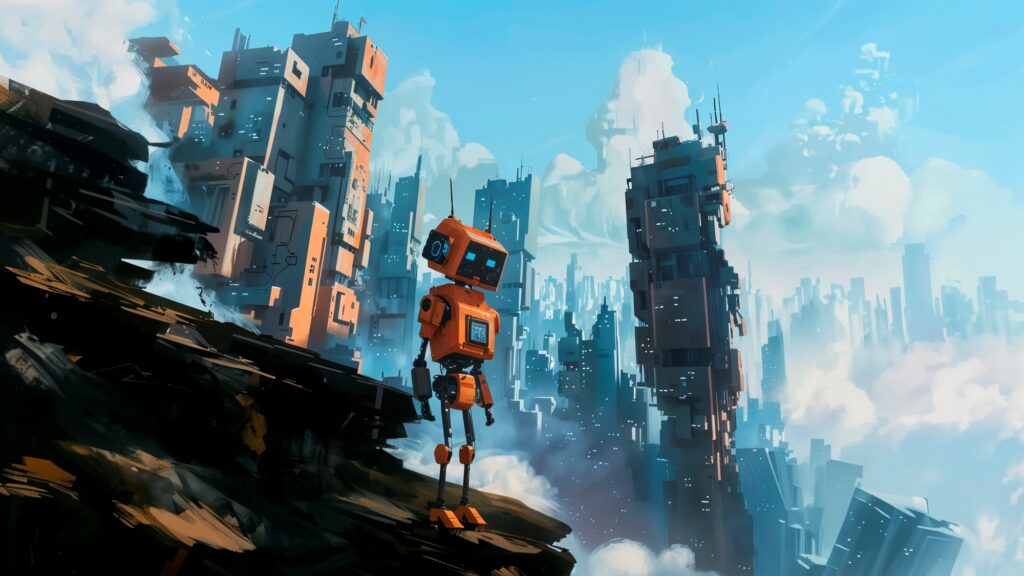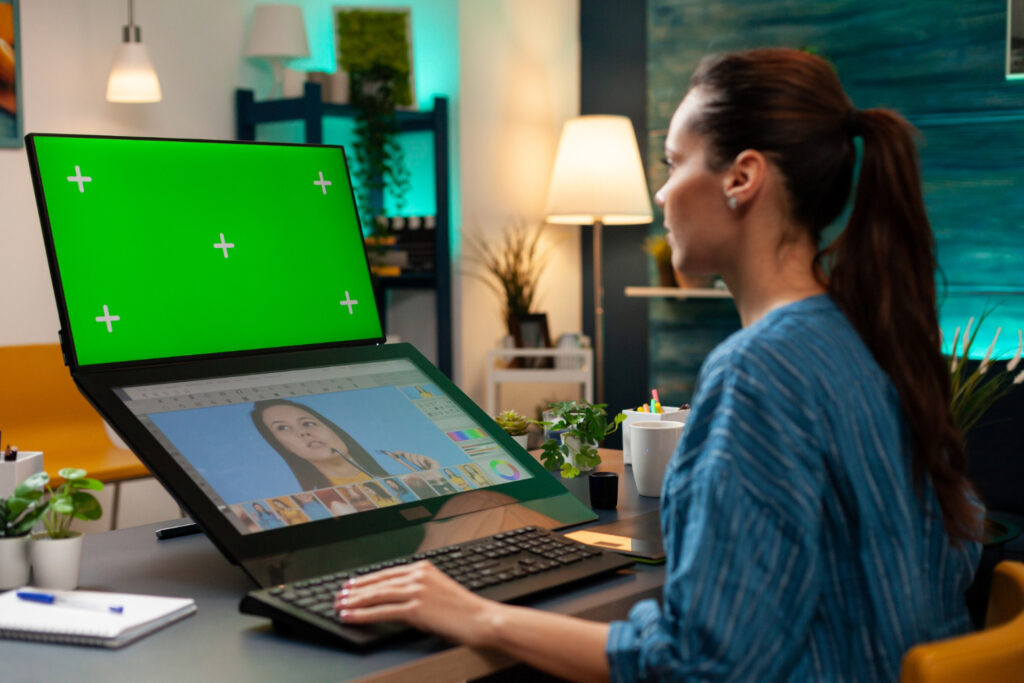Introduction of VFX Animation
VFX stands for Visual Effects. It is a special and advanced effect that is used in films, TV shows, video games, and digital media to create images or scenes that don’t exist in real life.
VFX is helpful for us when something is too expensive, dangerous, or impossible to shoot in real life. It combines computer-generated images (CGI) with real videos (live-action footage) to create amazing visual scenes, like magical creatures, explosions, or fantasy worlds.
VFX and animation are different from each other:
- Animation is useful for creating cartoons and 3d characters in movies or games. Its main goal is to create the illusion of movement.
- VFX is used for adding extra effects to live videos, such as CGI, motion capture, compositing, or robotic effects.

History of VFX Animation
VFX animation started in the 20th century. A pioneer named Georges Méliès was one of the first to use VFX techniques to create magic-like effects on screen. He used a double exposure (showing two images at once) and stop motion (moving objects frame by frame) methods. His famous film “A Trip to the Moon” (1902) is one of the first examples of VFX in cinema.
Filmmakers created new VFX methods over the years, like:
- Matte painting (painting backgrounds on glass or canvas)
- Rear projection (showing background video behind actors)
These techniques have helped us to make scenes look larger and more creative.
Later, in the 1970s and 1980s, digital technology changed VFX completely. Digital technology changed VFX completely in the 1970s and 1980s. Computer graphics (CG) started being used in films like Star Wars and Tron, which introduced CGI (Computer-Generated Imagery).
CGI became a breakthrough for VFX because it allowed filmmakers to create new worlds, characters, and effects.
Core Elements of VFX Animation
1.CGI (Computer-Generated Imagery)
CGI is one of the most commonly useful techniques in today’s world in VFX. It uses computer software to create visual content like characters, places, objects, and special effects.
CGI makes very realistic characters and cartoons, depending on the style chosen by the artists or director.
The Avengers and Avatar movies use the CGI method to build entire digital worlds and mix them with the real actors and scenes.
Main steps in CGI:
– Modelling: First, 3D artists create the shape of objects or characters in a computer. It’s like making a skeleton or structure (wireframe) that shows the basic layout of the content.
– Texturing and Shading: Then added colours, patterns, and surface details (roughness, glass shine, metal texture) to make it look real or match the specific style.
– Rigging and Animation: Now, artists add bones and joints so the object or character can move like a human or animal. For example, walking, talking, jumping, etc.
2.Motion Capture
Motian capture (MoCap) is a VFX technique that records real human movements and uses them for digital characters.
In this method, actors wear special suits with small sensors, and these sensors track every movement, such as walking, running, or facial expressions.
Then the movement data is sent to a computer, where it is applied to a 3D character.
The Lord of the Rings (Gollum) and Planet of the Apes (Caesar) used motion capture to create real-life characters that moved naturally with deep emotions.
3.Compositing
Compositing is the process of combining different visual elements (real video, CGI, or images) into one final shot.
For example, if an actor is shooting the movie in a studio, then a CGI background world is added behind them using compositing methods.
It’s an important part of VFX because it allows creators to mix real-world footage with digital effects in a natural and smooth way.

Compositing Techniques:
1) Green Screen/Blue Screen:
All the actors are shooting a film in front of a green or blue background. Later, this background is removed and replaced with CGI and visual effects. This technique is used in movies, TV shows, and even newsrooms.
2) Layering and Masking:
Compositing involves stacking multiple visual layers, like characters, background, and effects, on top of each other.
Masking allows artists to select and edit specific parts of an image. For example, changing the sky or adding fire in only one area.
4.Matte Painting
We can create large and imaginary backgrounds using Matte painting without any extra expense or difficulties.
In the past, artists painted these backgrounds by hand on canvas or glass and combined them with live-action footage in films.
Today, Matte painting is done using powerful computer software, which makes it easier and more flexible to create real scenes like big cities or outer space.
5.Particle Systems and Simulations
Particle systems create visual effects like fire, smoke, water, rain, and explosions in VFX.
A particle system generates thousands or millions of tiny particles that move and behave like real elements, and these particles are controlled by physics rules (gravity or wind).
So, a big explosion is not a real scene in movies; it’s a simulation using tiny particles.
Types of Simulations:
- Fluid Simulation: This simulation is used to make realistic water, lava, or any flowing liquid.
- Physics-Based Animation: This method allows artists to add real-world forces like gravity, bouncing, or breaking.
VFX used in Different Industries
1.Film and Television
Jurassic Park, Harry Potter, and Marvel’s Avengers use VFX to create huge action scenes, monsters, magic, and fantasy worlds.
TV shows also use VFX, especially in fantasy or science fiction stories, to add effects like futuristic cities, creatures, or explosions.
2.Video Games
The Last of Us and Cyberpunk 2077 use VFX to make characters, weapons, fire, weather, and magical effects.
VFX in games mostly uses CGI and particle effects (like smoke, sparks, or light).
3.Advertising and Marketing
Brands use VFX in commercials and online ads to create eye-catching visuals that grab the attention of users.
4.Virtual and Augmented Reality
VFX plays a big role in VR and AR:
- Full 3D environments are created in Virtual Reality (VR), so users feel like they’re inside a digital world. For example, gaming or virtual tours.
- In Augmented Reality (AR), VFX adds digital images on top of the real world, like AR filters on Instagram or trying furniture in your room through your phone.
Challenges in VFX Animation
VFX animation handles a huge amount of data during production. High-quality VFX scenes (like explosions, 3D characters, or realistic environments) require large computer power and storage space to process and save them easily.
Future of VFX Animation
The future of VFX animation looks very exciting because of new technologies like Artificial Intelligence (AI) and Machine Learning. it will become easier and faster for filmmakers and game creators to build amazing and interactive worlds.
Conclusion
VFX animation is a powerful and constantly evolving field that has redefined the way we experience visual media. From bringing imaginary worlds to life in films to enhancing realism and immersion in video games, VFX continues to push creative boundaries. As technology advances, VFX will play an even greater role in shaping the future of storytelling, entertainment, and digital interaction.
